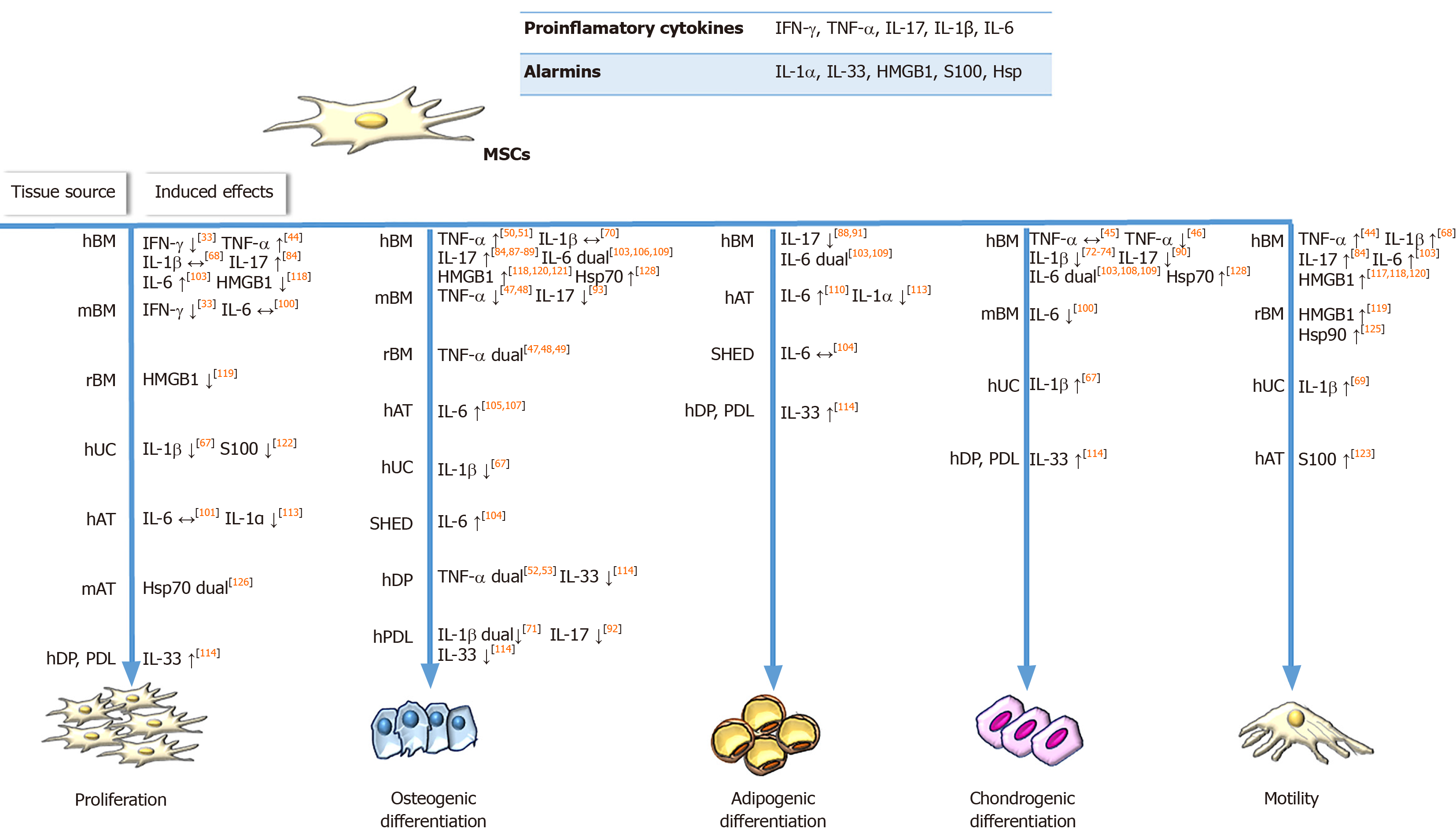Copyright
©The Author(s) 2020.
World J Stem Cells. Sep 26, 2020; 12(9): 922-937
Published online Sep 26, 2020. doi: 10.4252/wjsc.v12.i9.922
Published online Sep 26, 2020. doi: 10.4252/wjsc.v12.i9.922
Figure 1 Influence of inflammatory priming on regenerative features of mesenchymal stromal/stem cells under in vitro conditions.
Soluble factors in the inflammatory microenvironment, including pro-inflammatory cytokines secreted by immune cells and alarmins released by damaged cells, influence mesenchymal stromal/stem cells’ (MSCs) ability to regenerate tissue by affecting their proliferation, migration and differentiation potential (osteogenic, chondrogenic, adipogenic). When applied in vitro, indicated inflammatory factors differently affect the regenerative properties of MSCs depending on the species or tissue origin of MSCs. Symbols: ↑ and ↓ represent stimulatory or inhibitory activity of priming factor, respectively; ↔ indicates no effects of priming factor. The term ’dual’ indicates the data where priming factor dually affected MSCs function depending on applied concentration or MSCs donor age. The numbers in square brackets indicate the references. IFN-γ: Interferon gamma; TNF-α: Tumor Necrosis Factor alpha; IL: Interleukin; HMGB1: High mobility group box 1; Hsp: Heat shock proteins; MSCs: Mesenchymal stromal/stem cells; h: Human; WJ: Warthon jelly; BM: Bone marrow; r: Rat; UC: Umbilical cord; AT: Adipose tissue; DP: Dental pulp; PDL: Periodontal ligament; SHED: Exfoliated deciduous teeth.
- Citation: Jauković A, Kukolj T, Obradović H, Okić-Đorđević I, Mojsilović S, Bugarski D. Inflammatory niche: Mesenchymal stromal cell priming by soluble mediators. World J Stem Cells 2020; 12(9): 922-937
- URL: https://www.wjgnet.com/1948-0210/full/v12/i9/922.htm
- DOI: https://dx.doi.org/10.4252/wjsc.v12.i9.922









